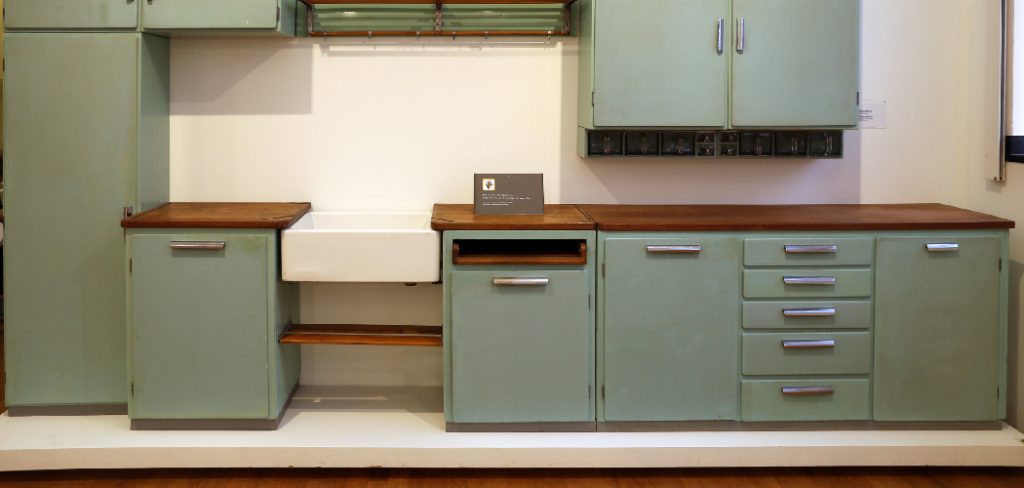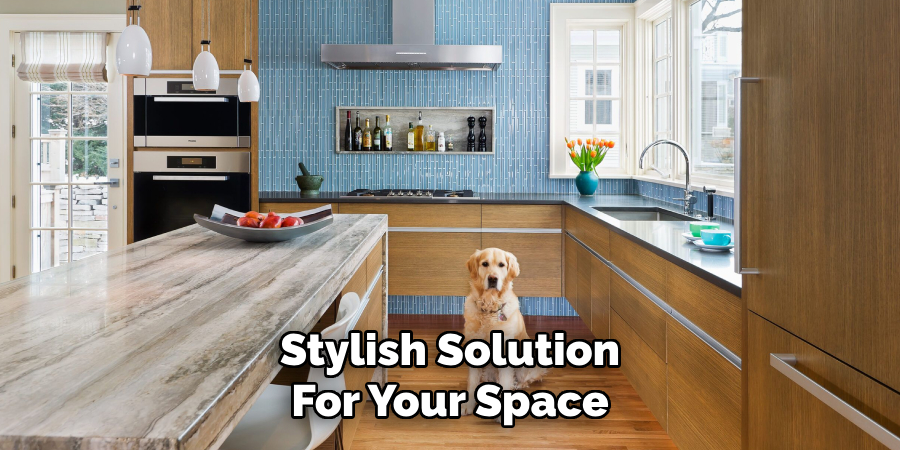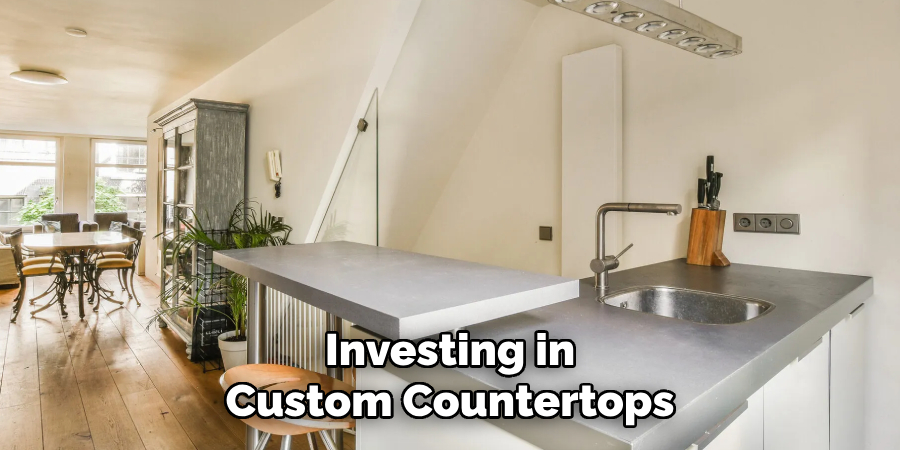When renovating a kitchen or bathroom, adjusting countertop height can significantly improve comfort and functionality. Standard countertops may not always meet the specific needs of a homeowner, whether due to personal preferences or ergonomic considerations.

Raising the height of a countertop can help create a more user-friendly workspace, eliminate strain during daily tasks, and enhance the overall aesthetic of the room.
This guide on how to raise countertop height will walk you through the various methods and factors to consider when raising countertop height, ensuring a practical and stylish solution for your space.
Why Raise Countertop Height?
Before diving into the details of how to raise countertop height, it’s essential to understand why you may want to do so. Here are a few reasons why homeowners choose to raise their countertops:
Improved Functionality
Some people find standard countertop height too low or high for comfortable use. Increasing the height can make tasks like chopping vegetables or doing dishes more convenient and less straining on the body.
Enhanced Aesthetic
Raising countertop height can also be a design choice, making the space appear more modern and visually appealing. This option is particularly popular when remodeling an older home with lower countertops.
Accessibility
For individuals with mobility limitations, a higher countertop can make it easier to reach and use. It allows for wheelchair accessibility and eliminates bending or stretching, reducing potential discomfort.
8 Simple Methods on How to Raise Countertop Height
Method 1: Add Shims
One of the simplest methods for raising countertop height is by adding shims between the countertop and its base. This method works best for countertops with a wooden base. To raise the countertop, follow these steps:
- Remove any items currently on the counter.
- Unscrew or pry off the existing countertop from its base.
- Place shims, such as thin pieces of wood or cardboard, between the countertop and base.
- Use a level to ensure the countertop is even and adjust the shims as needed.
- Once satisfied with the height, screw or attach the countertop back onto its base.

Method 2: Install New Base Cabinets
Another option for raising countertop height is by installing new base cabinets. This method allows for more customization as you can choose cabinets with different heights and styles. However, it requires more time and effort than using shims. Here’s how to install new base cabinets:
- Remove the existing countertops by prying them off with a pry bar.
- Measure the desired height for your new countertop and add it to the height of your base cabinet. This measurement will determine the overall height of your new cabinets.
- Install the new base cabinets according to the manufacturer’s instructions.
- Once installed, place the countertop on top of the cabinets and secure it in place with screws from underneath.
Method 3: Use Riser Blocks
Riser blocks are small squares or rectangles made of wood, plastic, or metal that can be used to raise a countertop. They are available at most hardware stores and come in various sizes and materials. To use riser blocks:
- Remove any items currently on the counter.
- Unscrew or pry off the existing countertop from its base.
- Place riser blocks on top of the base cabinets in the desired locations.
- Place the countertop back on top and secure it with screws from underneath.
Method 4: Replace Countertop Material
If your current countertop material is too thin to achieve the desired height, replacing it with a thicker material could be a practical solution. This method not only raises the countertop height but also offers an opportunity to upgrade to a more durable or visually appealing surface. Here’s how to replace the countertop material:
- Begin by removing the existing countertop carefully to avoid damaging the base cabinets. Use a pry bar or screwdriver as needed.
- Measure the dimensions of the countertop base to determine the size of the new material you’ll need.
- Choose a thicker countertop material, such as quartz, granite, or butcher block, with a thickness that aligns with your desired height.
- Once the material has been cut to the correct size, place it on top of the base cabinets and check for levelness. Use shims or adjustments if required.
- Secure the new countertop in place using screws from underneath or adhesive, depending on the material and manufacturer recommendations.
Replacing the countertop material not only raises the height but also enhances the appearance and functionality of the surface with a more modern or updated material.

Method 5: Build a Platform
For those who enjoy DIY projects and have some basic carpentry skills, building a platform to raise the countertop height can be a fun and cost-effective solution. Here’s how:
- Measure the dimensions of the existing countertop base.
- Using plywood or another sturdy material, build a platform that extends outside the perimeter of your base cabinets by the desired amount.
- Attach the new platform to your existing base cabinets using screws or adhesive.
- Place your countertop on top of the newly built platform and secure it in place with screws from underneath.
Method 6: Add Legs or Brackets
Another creative way to raise countertop height is by adding legs or brackets to the existing countertop. This method is most effective for countertops with overhangs that can accommodate additional support. To use this method:
- Measure and mark where you want the legs or brackets to go.
- Install the legs or brackets according to the manufacturer’s instructions, making sure they are securely attached to both the countertop and floor.
- Place your desired material on top of the new supports and secure it in place using adhesive or screws from underneath.
Method 7: Get Custom Countertops
Investing in custom countertops is an excellent solution for achieving the perfect height while also tailoring the design to your specific needs and preferences. Custom countertops are fabricated to your desired specifications, providing a seamless fit and a personalized touch. Here’s how to proceed with this method:
- Measure your current countertop height and determine the ideal height you want to achieve.
- Consult with a professional countertop fabricator or designer who can create a custom solution for your space. Provide details on the dimensions, preferred materials, and design preferences.
- Once the custom countertops are ready, remove the existing countertops carefully, ensuring not to damage the base cabinets.
- Install the custom countertops either independently or with the help of a professional installer. Follow the fabricator’s guidelines for securing the countertops in place, using screws or adhesives as recommended.
By opting for custom countertops, you gain the advantage of precision, enabling you to enhance both functionality and aesthetic appeal. This approach is particularly beneficial for unique layouts or spaces requiring a tailored solution.

Method 8: Consult with a Professional
If you’re unsure about how to raise countertop height or which method is best suited for your space, consider consulting with a professional contractor or carpenter. They can assess your current countertops and base cabinets and recommend the most appropriate solution for your specific needs and budget. It’s always better to seek expert advice before making any significant changes to your home’s structure.
With these eight simple methods, you can transform your kitchen or bathroom into a more functional and comfortable space. Whether you choose to use shims, install new cabinets, or get custom countertops, always prioritize safety and follow manufacturer instructions for best results.
Frequently Asked Questions
Q1: Is It Necessary to Raise Countertop Height?
Ans: It depends on the individual’s needs and preferences. Some people may find a higher countertop more comfortable for cooking or washing dishes, while others may prefer a lower height. Assess your specific needs before deciding whether to raise the countertop height or not.
Q2: Can I Raise Countertop Height Without Professional Help?
Ans: Yes, there are several DIY methods mentioned above that you can use to raise your countertop height. However, it’s essential to follow safety precautions and manufacturer instructions for best results. If you’re unsure or uncomfortable with DIY projects, consulting a professional is always an option.
Q3: How Much Does It Cost to Raise Countertop Height?
Ans: The cost of raising countertop height varies depending on the chosen method and materials used. Shims are the most affordable option, while custom countertops may come at a higher cost. Consult with professionals and compare prices before deciding on the best method for your budget. Overall, raising countertop height can range from a few hundred to a couple of thousand dollars.
Q4: Can I Raise Countertops in Rental Properties?
Ans: It’s always best to consult with your landlord before making any significant changes to a rental property. If you have permission, some of the DIY methods mentioned above may be suitable for rental properties as they are reversible and do not cause damage to the existing structure. However, it’s essential to obtain written permission and follow all safety regulations when making changes to a rental property.

Conclusion
Raising countertop height can significantly improve both the functionality and aesthetic appeal of your kitchen or bathroom. With several methods available to raise countertop height, ranging from simple DIY solutions like using shims or building platforms to more complex options like installing custom countertops or consulting professionals, there is something to suit every budget and skill level.
Carefully assess your specific needs, preferences, and space constraints before choosing the best approach. Whether you prioritize comfort, style, or practicality, the right solution can transform your space into a more efficient and visually appealing area.
Professional Focus
Angela Ervin, a former interior designer turned blogger, specializes in kitchen design and renovations. Through her website, she blends her passion for cooking with design expertise, sharing practical and creative ideas. Known for balancing functionality and beauty, Angela’s insightful content has made her a trusted voice in home design and lifestyle.
About the Author
Angela Ervin, an experienced interior designer and blogger, combines her passion for kitchen renovations with storytelling. Living in Petersburg with her family, she enjoys cooking and testing her projects firsthand. Known for her humor and relatable style, Angela shares creative, functional design insights through her content, making her a trusted voice in home design.
Education History
University: Virginia Commonwealth University
Degree: Bachelor of Fine Arts (BFA) in Interior Design
- Angela’s education at VCU focused on mastering core interior design principles, including spatial planning, color theory, materials selection, and sustainable design practices.
- She gained hands-on experience through studio projects and collaborative design exercises, which honed her ability to create functional and aesthetically pleasing environments.
- Her coursework also emphasized problem-solving and practical applications of design, preparing her for real-world projects like her self-directed kitchen renovations.
- The program’s strong foundation in both technical skills and creative expression shaped Angela’s ability to seamlessly integrate form and function in her work.
